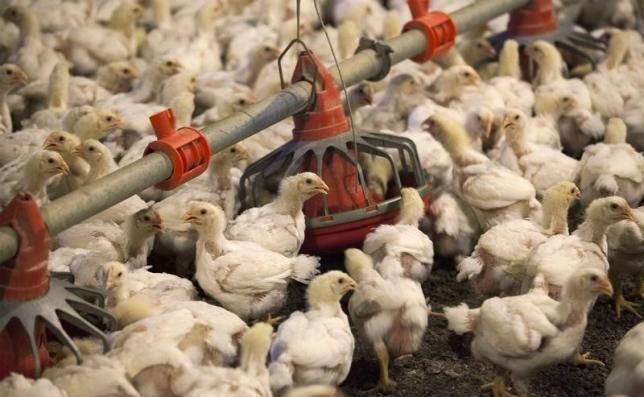Scientists have created a bird flu vaccine strain that is 100 percent effective in safeguarding chickens from the virus, while the testing of turkeys is still ongoing. The United States Department of Agriculture (USDA) reported the avian influenza update to a U.S. House Committee during a congressional hearing on July 22, Wednesday.
Tom Vilsack is the U.S. Agriculture Secretary. He noted that a fall outbreak would be twice as worse as the one in the spring, according to KCUR.org. A "worst-case scenario" would be 500 outbreaks.
If the vaccine works on turkeys then the agency will take immediate action. It will license it for production and request funding from the Office of Management and Budget (OMB) in order to start national stockpiles.
The H5N2 virus has already killed over 48 million birds in 15 states since March, according to St. Louis Post-Dispatch. Iowa, Minnesota, and Nebraska were the hardest hit.
Scientists' theory is that the virus spread through feces of wild birds that migrated to northern nesting grounds. They fear it could happen again this winter or next spring.
The avian flu affected Midwest egg farms the most. However, some southern and eastern states that raise broilers (chickens raised for meat) have major concerns that it could spread to those regions.
Turkey farmers tend to support vaccines. That is due to the winged animals' immune systems being vulnerable to viruses.
However, broiler farmers often oppose bird vaccinations. The reason is that they can have a negative effect on export markets, as it can be difficult to detect if chickens have been infected or vaccinated.
U.S. exports for egg and poultry products total about $6 billion. Chicken meat accounts for around $5 billion.
The U.S. has been meeting with nations that import American chicken products. Its goal is to avoid a total ban of U.S. eggs, chickens, and turkeys, fearing another bird flu outbreak.
Many Midwestern farmers have complained that following the spring outbreak, securing USDA approval to receive federal compensation for losses, and new birds to replace dead ones has been "frustrating." The process has been very slow.
This year's avian flu epidemic produced losses of an estimated $3.3 billion.



























